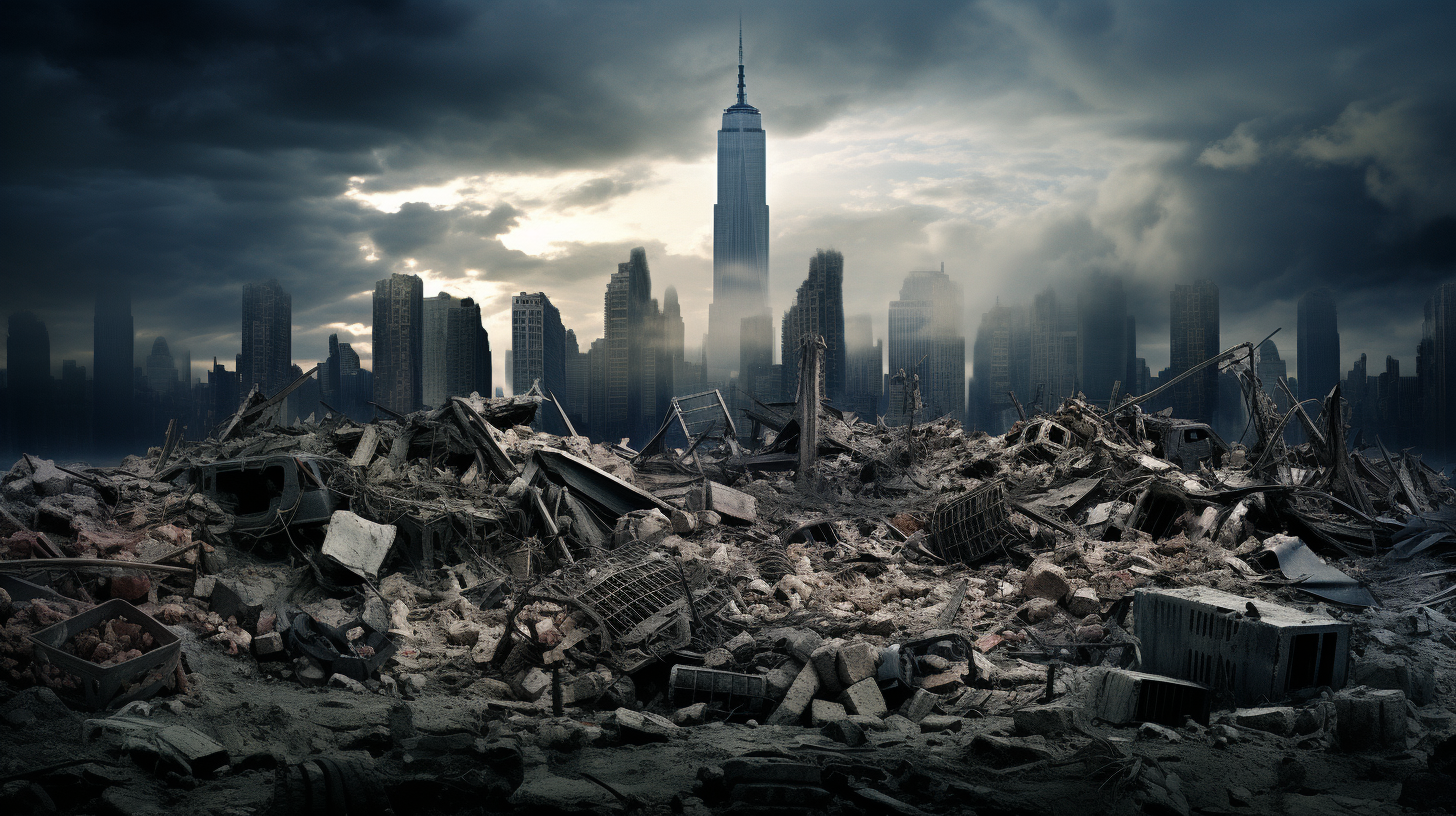In the unyielding twilight of our world, where the sun is obscured not by the natural fall of night, but by the thick smog of our own creation, it’s hard to envision any remnants of beauty. But amidst the debris of our once-bustling metropolises, one cannot help but wonder: can skylines rise from the rubble?
Humanity’s insatiable thirst for expansion once painted the horizon with towering structures that kissed the clouds. Now, those same structures stand – or rather, teeter – as the monuments to our arrogance, pummelled relentlessly by nature’s indomitable wrath.
Yet, within these broken silhouettes and fallen skyscrapers, a new narrative is emerging. If one looks closely, beyond the decay, there’s a murmur of life. Weeds push defiantly through the cracks in pavement; vines drape over the skeletons of steel and glass, claiming them as part of the landscape.
This is not a call to arms, nor an anthem of hope. No, such frivolous sentiments are long since past. Instead, it’s an acknowledgment of what becomes of our world when we’re forced to abandon the notion of dominion over nature and instead, become mere spectators in its relentless cycle.
Amidst the rubble of our past excesses, there are those who have repurposed the skeletal fingers of infrastructure to forge new lives. Communities perch in the precarious balance between yesterday’s relics and the unforgiving nature of tomorrow. They are not aiming to rebuild the old world but rather, to adapt to what’s left, forging sustainability in the ruins through makeshift aquaponics, repurposed materials, and salvaged solar panels.
In cities engulfed by rising seas, daring souls navigate in makeshift boats, traversing the realms that once murmured with endless traffic. They glean from the waters what the past left behind—a cautionary inheritance, yet one which they are determined to make the most of.
Experts debate on the feasibility of such a resurgence. Some scoff at the resilience displayed, dubbing it futile in the face of the calamities that beleaguer our planet. Yet others observe, with a mix of melancholy and macabre fascination, the ingenuity and resolve that guide these survivors. “It is as if humanity’s true nature is found not in the pristine high-rises of yesteryear, but in the finesse of rising not in spite of the collapse, but through it and with it,” remarks an anonymous sage of the times.
Is there a lesson, perhaps, in this post-apocalyptic renaissance? We observe a life that pushes through the cracks – literal and metaphorical – an unbidden testament to survival in the face of calamity that once seemed to promise only despair. The city’s tortured silhouette against a dying ember of daylight is not beautiful. But it is compelling in its honesty, in its stark presentation of consequences after humanity’s credit with nature overdrawn.
So, as we contemplate the possibility of skylines rising again, let us not think of reaching towards the sky as we once did, striving ever upwards in defiance of gravity and nature. Instead, let us consider how the future landscape might blend with the Earth’s canvas, painting not with the hubris of the past, but with a humble admission of our place in the grander scheme.
The question remains not so much whether we can build once more, but should we? Not whether we can impose our will upon the land but whether we can coexist with it. In a world where the tools of our triumph turned into weapons of destruction, perhaps what rises from the rubble are not the skylines of our dreams, but those of a reality more profound than any we could have designed.
